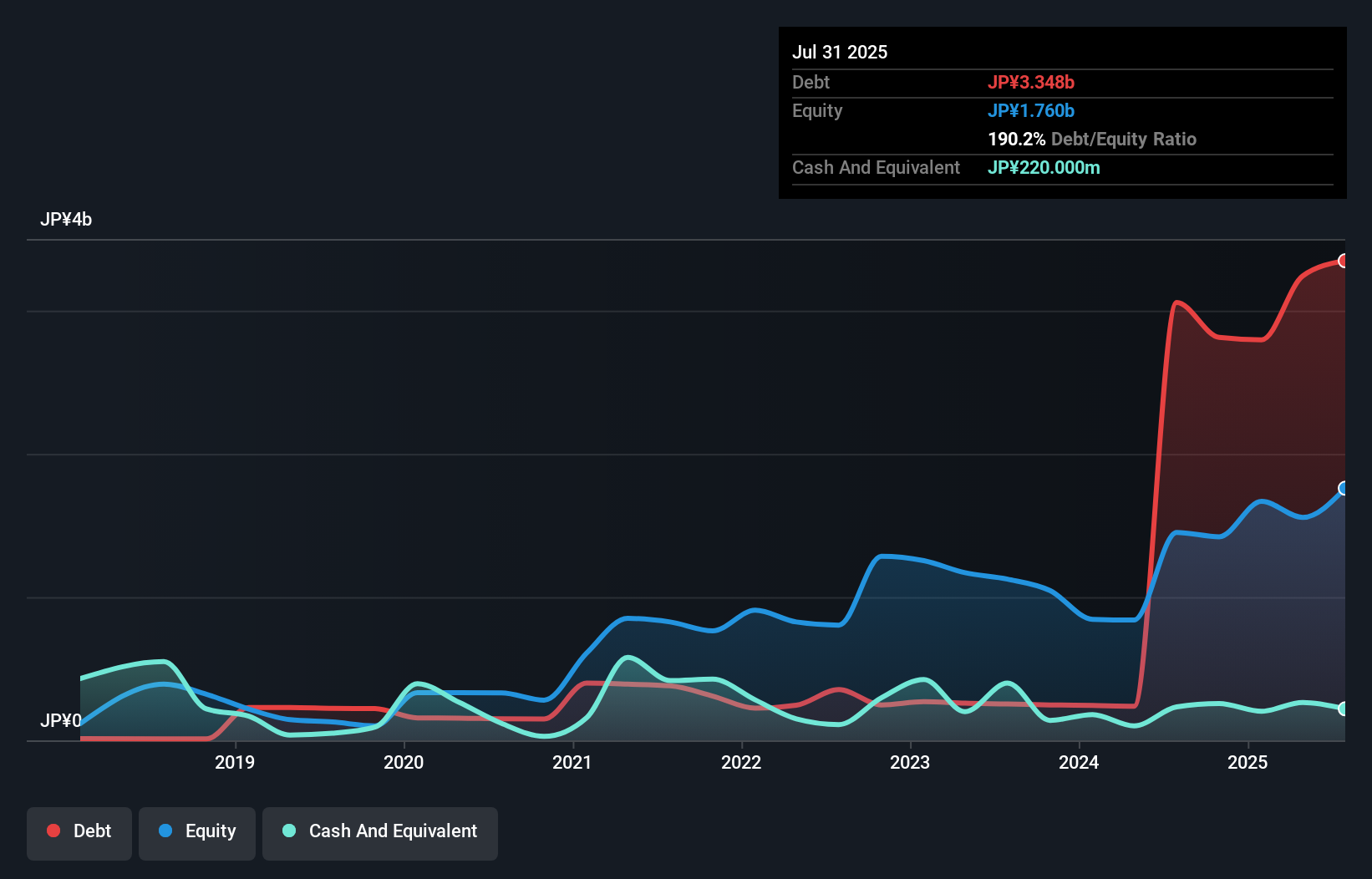David Iben put it well when he said, 'Volatility is not a risk we care about. What we care about is avoiding the permanent loss of capital.' When we think about how risky a company is, we always like to look at its use of debt, since debt overload can lead to ruin. Importantly, SHINTO Holdings, Inc. (TSE:2776) does carry debt. But is this debt a concern to shareholders?
When Is Debt Dangerous?
Generally speaking, debt only becomes a real problem when a company can't easily pay it off, either by raising capital or with its own cash flow. Part and parcel of capitalism is the process of 'creative destruction' where failed businesses are mercilessly liquidated by their bankers. While that is not too common, we often do see indebted companies permanently diluting shareholders because lenders force them to raise capital at a distressed price. Having said that, the most common situation is where a company manages its debt reasonably well - and to its own advantage. The first step when considering a company's debt levels is to consider its cash and debt together.
What Is SHINTO Holdings's Debt?
The image below, which you can click on for greater detail, shows that at July 2025 SHINTO Holdings had debt of JP¥3.35b, up from JP¥3.06b in one year. However, it does have JP¥220.0m in cash offsetting this, leading to net debt of about JP¥3.13b.

How Strong Is SHINTO Holdings' Balance Sheet?
According to the last reported balance sheet, SHINTO Holdings had liabilities of JP¥3.83b due within 12 months, and liabilities of JP¥1.87b due beyond 12 months. Offsetting these obligations, it had cash of JP¥220.0m as well as receivables valued at JP¥1.72b due within 12 months. So it has liabilities totalling JP¥3.77b more than its cash and near-term receivables, combined.
This deficit is considerable relative to its market capitalization of JP¥5.21b, so it does suggest shareholders should keep an eye on SHINTO Holdings' use of debt. Should its lenders demand that it shore up the balance sheet, shareholders would likely face severe dilution.
View our latest analysis for SHINTO Holdings
We measure a company's debt load relative to its earnings power by looking at its net debt divided by its earnings before interest, tax, depreciation, and amortization (EBITDA) and by calculating how easily its earnings before interest and tax (EBIT) cover its interest expense (interest cover). The advantage of this approach is that we take into account both the absolute quantum of debt (with net debt to EBITDA) and the actual interest expenses associated with that debt (with its interest cover ratio).
Weak interest cover of 0.98 times and a disturbingly high net debt to EBITDA ratio of 12.7 hit our confidence in SHINTO Holdings like a one-two punch to the gut. The debt burden here is substantial. One redeeming factor for SHINTO Holdings is that it turned last year's EBIT loss into a gain of JP¥52m, over the last twelve months. When analysing debt levels, the balance sheet is the obvious place to start. But it is SHINTO Holdings's earnings that will influence how the balance sheet holds up in the future. So if you're keen to discover more about its earnings, it might be worth checking out this graph of its long term earnings trend.
Finally, a company can only pay off debt with cold hard cash, not accounting profits. So it's worth checking how much of the earnings before interest and tax (EBIT) is backed by free cash flow. During the last year, SHINTO Holdings burned a lot of cash. While investors are no doubt expecting a reversal of that situation in due course, it clearly does mean its use of debt is more risky.
Our View
To be frank both SHINTO Holdings's interest cover and its track record of converting EBIT to free cash flow make us rather uncomfortable with its debt levels. Having said that, its ability to grow its EBIT isn't such a worry. We're quite clear that we consider SHINTO Holdings to be really rather risky, as a result of its balance sheet health. For this reason we're pretty cautious about the stock, and we think shareholders should keep a close eye on its liquidity. When analysing debt levels, the balance sheet is the obvious place to start. However, not all investment risk resides within the balance sheet - far from it. For example SHINTO Holdings has 5 warning signs (and 2 which are significant) we think you should know about.
At the end of the day, it's often better to focus on companies that are free from net debt. You can access our special list of such companies (all with a track record of profit growth). It's free.
New: Manage All Your Stock Portfolios in One Place
We've created the ultimate portfolio companion for stock investors, and it's free.
• Connect an unlimited number of Portfolios and see your total in one currency
• Be alerted to new Warning Signs or Risks via email or mobile
• Track the Fair Value of your stocks
Have feedback on this article? Concerned about the content? Get in touch with us directly. Alternatively, email editorial-team (at) simplywallst.com.
This article by Simply Wall St is general in nature. We provide commentary based on historical data and analyst forecasts only using an unbiased methodology and our articles are not intended to be financial advice. It does not constitute a recommendation to buy or sell any stock, and does not take account of your objectives, or your financial situation. We aim to bring you long-term focused analysis driven by fundamental data. Note that our analysis may not factor in the latest price-sensitive company announcements or qualitative material. Simply Wall St has no position in any stocks mentioned.
About TSE:2776
Moderate risk and slightly overvalued.
Market Insights
Community Narratives



